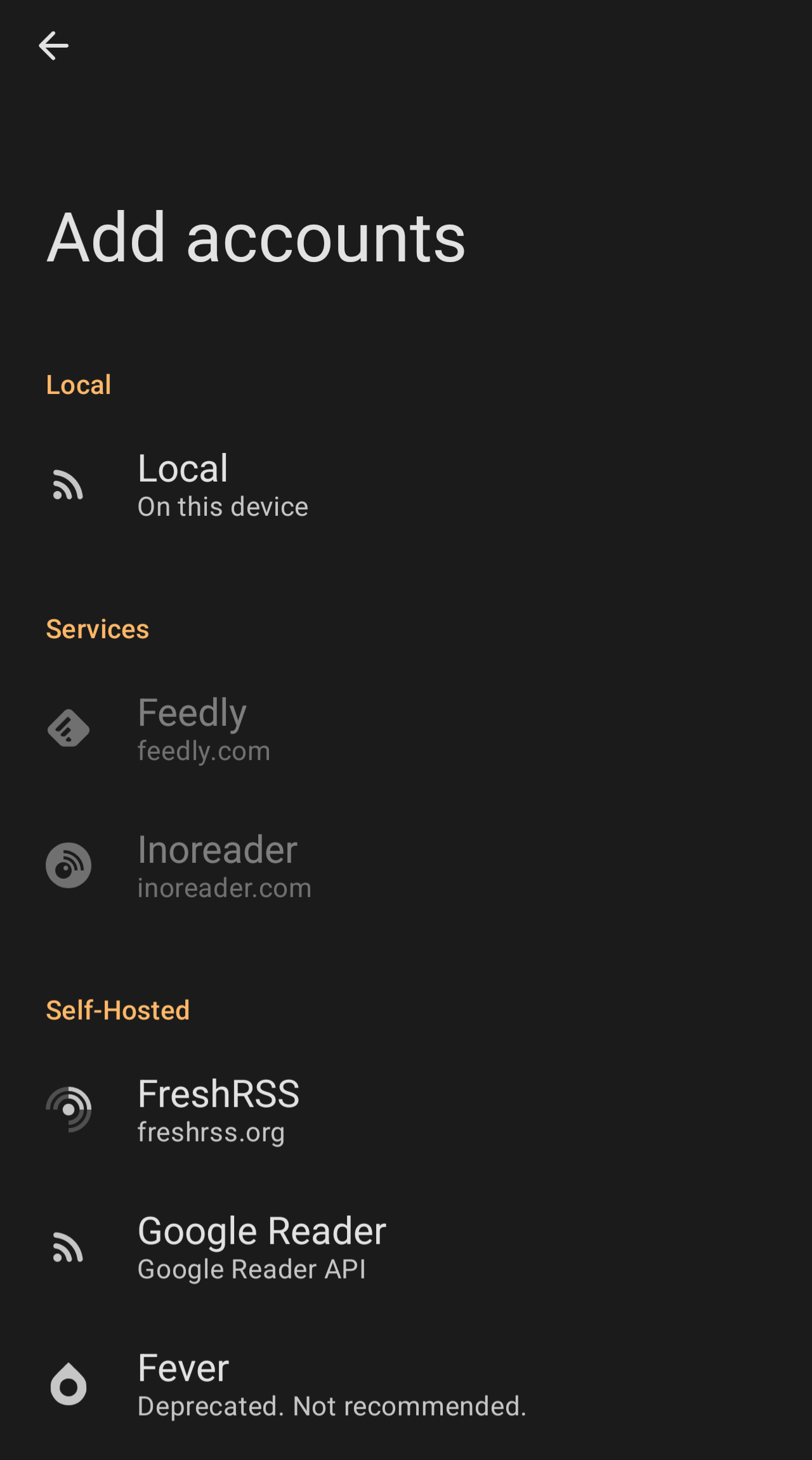Bummer, that’s strange.
AmbiguousProps
- 35 Posts
- 169 Comments
Just took a glance at the settings in Read You, it seems like you might be able to use it locally. Might be worth a try.

I use FreshRSS (a self-hosted RSS aggregator) with Read You (for Android) and have Techdirt and Cascade PBS working, I actually just added Cascade PBS today. Of course this might require you to self host FreshRSS, but FreshRSS is well worth it.
Looking at the feeds, they seem pretty standard. I’m surprised your app isn’t accepting them.
It was already forked as classicpress.

 2·26 days ago
2·26 days agoI mean, if you took what I said as a personal attack I don’t know what else to say. Are you sure it’s me that needs to get a grip?

 3·26 days ago
3·26 days agoMost of Amazon’s revenue comes from AWS (a tech company), therefore Amazon is appropriately called a tech company.

 4·26 days ago
4·26 days agoWhat a dumb hill to die on. Are you anti-labor or something? This will affect all of amazon, and AWS is one of the largest tech companies out there. If you don’t want this post on your feed, I invite you to hide it or block OP. The votes clearly show the community doesn’t agree with you and that they don’t mind this on their feed.

 61·26 days ago
61·26 days agoYou do know about AWS, right?? This applies to them too.

 11·30 days ago
11·30 days agoThis is one of the reasons I use unRAID with two parity disks. If one fails, I’ll still have access to my data while I rebuild the data on the replacement drive.
Although, parity checks with these would take forever, of course…

 12·1 month ago
12·1 month agoArchive link: https://archive.ph/w9soL

 4·1 month ago
4·1 month agoArchive link: https://archive.ph/JoqVP

 6·1 month ago
6·1 month agoArchive link: https://archive.ph/iKcYS

 6·1 month ago
6·1 month agoArchive link: https://archive.ph/CAxE9

 4·1 month ago
4·1 month agoNo fucking thanks.

 83·1 month ago
83·1 month agoThe best part of this is how Zendesk’s blog post claims that Zendesk discovered the issue, and then blamed the 15 year old for not following ethical principles.

 16·1 month ago
16·1 month agoWell, he did say he’d put a man on Mars in 10 years… back in 2011.
…And then in 10 years in 2014 (meaning 2024).
…And then in 6 years in 2016 (meaning 2022)
…And then in 6 years again in late 2020 (meaning 2026)
Then we finally end up on his 2029 date back in 2022.
I’m sure I’ve missed one or two of his suggested landing years, but you get the point. He has no idea of when we’ll actually go to Mars, he’s just saying what gets him the most publicity.

 611·1 month ago
611·1 month agoalthough Ecovacs accounts are password-protected, and a further four-digit PIN code is required to access the video feed, that PIN code is not validated server-side—meaning anyone with the basic know-how of a tool like Chrome web inspector could bypass it

 41·1 month ago
41·1 month agoIt’s interesting to see someone so upset that someone consider safety when driving a 5,000+ lb vehicle.
Usually, people who say “this is about emotion” in a debate or argument are the ones acting fully on their emotions. Oh no, someone is emotional about not wanting to get killed by a tech bro texting or sleeping while their car poorly “drives” them! The horror!

They weren’t kicked out, iirc. Their contributions just aren’t automatically merged anymore